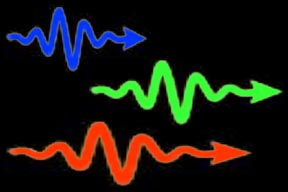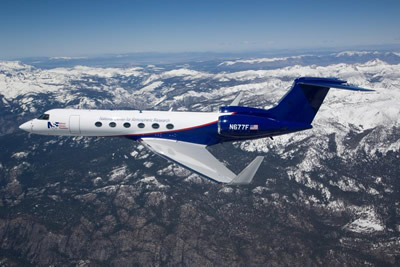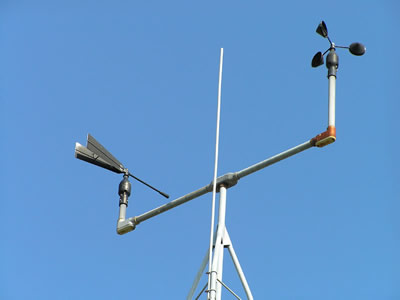Ionosphere Constituents
The various regions of the ionosphere have
higher concentrations of charged particles (ions) than do other parts of the thermosphere,
which consists mostly of electrically neutral atoms and molecules.
These ions are created when energetic photons from
the Sun collide with atoms and molecules in the atmosphere, knocking electrons out
of the atoms and molecules in a process called photoionization. The composition
of the ionosphere, in terms of elements and compounds, reflects the composition
of the neutral atmosphere from which it is generated.
The graph below shows the density of seven important constituents of the ionosphere
(ionized forms of six gases plus free electrons). Click on the check boxes
at the bottom of the graph to hide or show individual curves. (If you don't
see
the
graph,
you
may
need
to
install
the
latest version
of the Flash player onto
your computer.)
You might also be interested in:

The thermosphere is the fourth layer of the Earth's atmosphere. It is found above the mesosphere. The air is really thin that high up. The temperature changes with the solar activity. If the sun is active,
...more
Text for this level has not been written yet. Please see the "Intermediate" text for this page if you want to learn about this topic. To get to the "Intermediate" text, click on the blue "Intermediate"
...more
An element (also called a "chemical element") is a substance made up entirely of atoms having the same atomic number; that is, all of the atoms have the same number of protons. Hydrogen, helium, oxygen,
...more
Rainbows appear in the sky when there is bright sunlight and rain. Sunlight is known as visible or white light and is actually a mixture of colors. The sun's rays pass through millions of raindrops. A
...more
It takes the Earth one year to travel around the sun one time. During this year, there are four seasons: summer, autumn, winter, and spring. Each season depends on the amount of sunlight reaching the
...more
Scientists sometimes travel in airplanes that carry weather instruments in order to gather data about the atmosphere. These research aircraft bring air from the outside into the plane so scientists can
...more
An anemometer is a weather instrument used to measure the wind (it can also be called a wind gauge). These instruments can be used in a backyard weather station or on a well-equipped scientific research
...more














